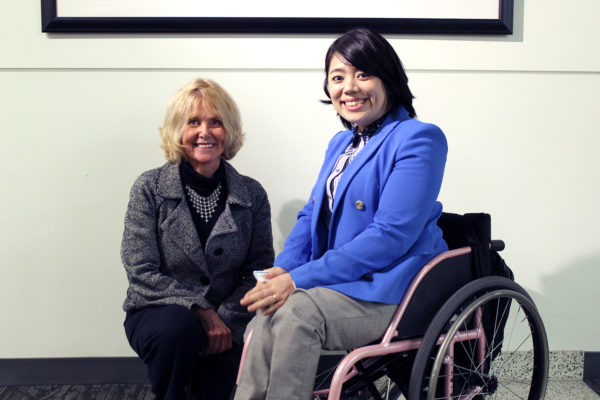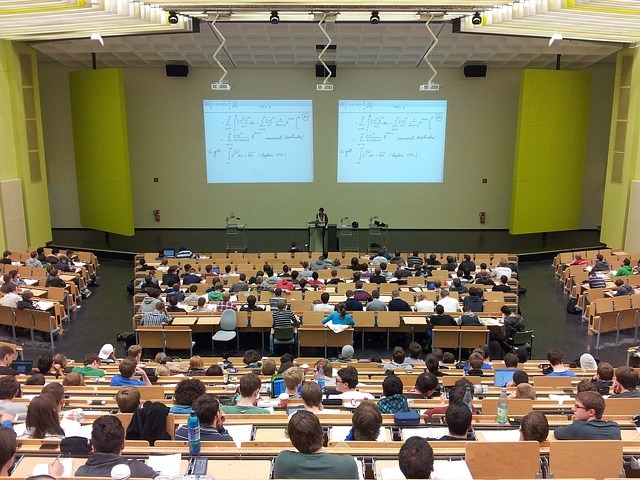This article is also available in: 日本語
About a year ago, I attended a seminar in Tokyo and heard about the “DO-IT Japan” Project. “DO-IT” is an abbreviation of Disabilty, Opportunity, Internetworking and Technology. The project provides various opportunities for students with disabilities including utilizing technology. In the seminar, I heard that the original DO-IT program started at the University of Washington in the US, so I was looking forward to visiting there during my research period.
My wish came true! When I visited Seattle in February, I had an opportunity to interview Dr. Sheryl Burgstahler(Founder and Director of DO-IT), Mr. Doug Hayman (Technology Specialist), Ms. Debra Zawada (Counselor and Coordinator), and Ms. Tami Tidwell (Counselor and Coordinator) at DO-IT.

Sheryl, the founder, started her career as a junior high mathematics teacher and now has her master’s and bachelor’s degrees in mathematics and education and her Ph.D. in governance, and administration of higher education, specializing in the development and deployment of technology tools and services that are accessible and usable by everyone, including those with disabilities. In the US, many students with disabilities receive general education with students without disabilities (*1). Throughout her career, Sheryl has gained lots of experience teaching students with disabilities.
While teaching junior high, she got interested in “assistive technology” which supports people with disabilities to expand their abilities in education, workplace, and daily life. A screen reader for a blind person is one of the examples. In 1984, when Macintosh came to the world, Sheryl felt that IT would change the society dramatically. Then she started thinking how to reduce the gap between people with and without disabilities by utilizing her knowledge, experience as a teacher, and IT.

Especially when Sheryl was a classroom teacher, she saw huge differences between the K-12 learning environment which is mandatory in the US, and the post-secondary environment. Through high school, students with disabilities can have IEPs (Individualized Education Program) or 504 Plans that allow them to receive necessary supports or access from their K-12 school.
The students and parents work directly with the school team expressing their reasonable accommodation or access needs like elevator access to classrooms, alternate formats and extended testing times based on the student’s disability diagnosis and needs. The schools then arrange these accommodations accordingly. Proactive supports from parents and adults around the students with disabilities are helpful but they can also allow fewer opportunities for some students with disabilities to decide and take actions by themselves. However, once students with disabilities start going to college, the situation is completely different. There is no homeroom teacher in college, so parents cannot come in and consult like they did in high school. Each college in the US has a dedicated office to support students with disabilities (*2), but if students need accommodations, they have to contact the office, provide documentation and request what they need for themselves.

Sheryl was often told from colleges. “Students with disabilities are not prepared enough to come and study in college.” It is not about their academic ability, but it means that students with disabilities do not know what kind of accommodation or what kind of tool they need to create a proper learning environment for themselves. In some cases, the reason is because adults around them, especially their parents, have decided everything for them. Many students with disabilities haven’t searched, thought, asked what they need by themselves before.
In college, the documentation of students with disabilities are not registered automatically. Whether the disability is visible or not, professors and faculty are not allowed to tell students “I see that you have a disability, you should go to the disability office and ask for accommodations”. In college, only the students can take actions and decide what they need. College’s environment is “It is all about yourself”. Sheryl had found this issue, and decided to start DO-IT which supports students with disabilities to transit smoothly from high school to post-secondary education.
*1 This is a report of visiting a public elementary school in Syracuse. I have found lots of differences in learning environment between US and Japan.
Education Issues In Japan That I Found From Visiting Elementary School In The U.S.
*2-1 Each college in US has a dedicated office to support students with disabilities.
This is a report of Office of Disability Services at Syracuse University, NY where I have worked with.
The Limitation Is Not Caused by The Disability But by The Environment
*2-2 This is a report of interviewing Student Ability Service at University of Wisconsin River Falls where I graduated. Depending on State, city and a size of college, the service students can receive is different.
